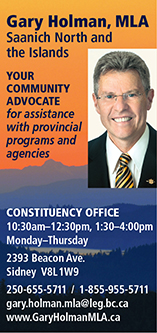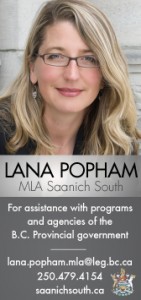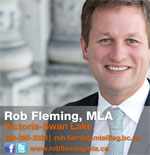Archive for December 2015
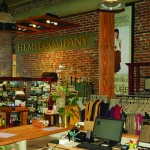
Buy Less, Buy Better, Buy Local
by Carole Pearson
“When we think of pollution, we envision coal power plants, strip-mined mountaintops and raw sewage piped into our waterways.
We don’t often think of the shirts on our backs. But the overall impact the apparel industry has on our planet is quite grim,” writes Glynis Sweeny in “Fast Fashion is the Second Dirtiest Industry in the World, Next to Big Oil”.
In Overdressed: The shockingly high cost of cheap fashion, author Elizabeth Cline states,“The natural resources that go into fibre production every year now demand approximately 145 million tons of coal and somewhere between 1.5 trillion and two trillion gallons of water.”
“Disturbingly, about half of our wardrobe is now made out of plastic, in the form of polyester,”
“More than anything, the sheer amount of production is a problem,” comments Bangalore University’s Lakshmi Challa in her report, the Impact of Textiles and Clothing Industry on the Environment. “From wastewater emissions to air pollution and energy consumption the textile industry weighs heavily in the environment.”
Hundreds of textiles factories line the shores of Indonesia’s Citarum River. According to Greenpeace, “The printing and dying processes are particularly chemically intensive and have contributed to the Citarum developing a reputation as one of the dirtiest rivers on earth.”
Earth can’t produce enough natural fibres to fill demand, Challa says. Synthetics are popular, low-cost alternatives but far from ideal. For one thing, they are hard to recycle. Nylon takes 30 to 40 years to decompose. Nylon production creates nitrous oxide, “a greenhouse gas 310-times more potent than carbon dioxide,” notes Challa.
Synthetic fabrics, such as polyester, nylon, acrylic, Lycra, Spandex, and PVC, are all petroleum-based, meaning they are non-biodegradable. Their manufacture uses vast amounts of water and crude oil.
“Disturbingly, about half of our wardrobe is now made out of plastic, in the form of polyester,” says Cline. People who scorn bottled water because of the plastic waste it could be guilty of owning a closet full of plastic, just in a different form.
“Of the billions of new clothing items purchased each year, 90 percent is transported from offshore factories by container ships using the dirtiest of fossil fuels – low grade bunker fuel.”
Lorna Knowles is co-owner of Victoria’s Hemp and Company which sells clothing made of natural fibres. She says, “We found the more research we did validated the path we have taken. Like the impact of polyester and even recycled polyester that is made into the fleece that people buy in great quantities.
“The fabric breaks down and produces micro-particles that go into the environment. What people don’t realize is, (micro-particles of) their clothing goes into the ocean with every washing.”
Of the billions of new clothing items purchased each year, 90 percent is transported from offshore factories by container ships using the dirtiest of fossil fuels – low grade bunker fuel – according to Sweeny.
""
In contrast, Hemp & Company stocks its own clothing line. “We have a local designer buying fabric from a local distributor. We employ a pattern maker for our factories in Vancouver. It keeps money in the local economy, and is good for more people,” says Knowles. The store also carries other Canadian-made clothing.
Buying fewer clothes will help the environment. As Knowles suggests, “It’s about making a conscious decision to buy less but buy better quality.”
Up next – recycling fashion in Saanich.
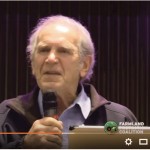
Damning Site C
And Disturbing the Peace
article by Michele Murphy, based on video shot by Ed Johnson
BC Hydro named consortium Peace River Hydro Partners as its preferred partner in the 1.5 billion dollar Site C construction contract on Nov 25, 2015. The three-member partnership includes Korean based
Samsung, Acciona from Spain, and Calgary-based Petrowest Corp.
“a reasonable government would investigate the energy demand, analyze the cost and consider cleaner, more sustainable energy alternatives.”
As the BC Liberal government pushes ahead with the controversial mega project, Harold Steves, Richmond councillor, former Agricultural Land Commission (ALC) Chair, and ‘Father of the ALR’ Harold Steves continues to be very vocal with his opposition to the project saying that, “a reasonable government would investigate the energy demand, analyze the cost and consider cleaner, more sustainable energy alternatives.”
Saanich Voice Online and Saanich Report’s Ed Johnson recorded Steves’ presentation, “Future of Farmland and the ALR in BC,” made at a Farmland Protection Coalition gathering in Victoria in October. The one-hour presentation features Steves joined by former ALC Chair Richard Bollock, local farmer and land-use activist Natalie Chambers, and former
senior officer in the Ministry of Agriculture, Sig Peterson.
“The Peace’s farmland absorbs at least 50,000 tons of CO2 per year”
The well-attended talk laid out in no uncertain terms the immense impact to BC’s agricultural farmland stock that the flooding of 30,000 acres of prime farmland in the Peace River Valley would have. Steves talked about the state of food security in BC, noting the recent loss of over 500,000 of acres of active food production in California, at the same time as new crop opportunities open up in BC, attributing both to climate change.
Steves noted the value the Peace adds to BC’s carbon sequestration equation explaining that the Peace’s farmland absorbs at least 50,000 tons of CO2 per year. That won’t happen once the land is flooded.
He goes on to highlight many of the innovative green energy solutions that are currently in play in both Vancouver and Richmond as evidence of the lack of need for a mega-power project in this day and age.
Among the innovations Steves lists is an impressive solar network being looked at throughout the City of Vancouver that could see as many as 900,000 homes receiving their power from solar – twice Site C’s proposed output. Another such innovation is Richmond’s district-owned geothermal infrastructure. The project has already created enough energy to heat 12,000 homes, and Steves says, “We could do every home in Richmond over a period of time.”
You’ll find links for both an 8-minute Site C specific talk from Harold Steves HERE, and the larger one hour update on BC’s ALR HERE on Saanich Report’s Youtube channel
ga('create', '__', 'auto'); ga('send', 'pageview');
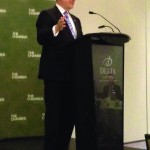
Amalgamation Dims for the Capital Region
by Roger Stonebanks, citizen journalist
Blue skies turned grey in November for amalgamation supporters as the BC government favoured “service and governance integration” within the Capital Region.
Community Minister Peter Fassbender has this written mandate from Premier Clark: “Develop and present options to Cabinet on potential processes under which local governments could either amalgamate or integrate service delivery by June, 2016.”
Public attention focussed on “amalgamate” in the mandate but neglected to heed the word “could” and the expressed alternative to amalgamation – “or integrate service delivery.”
Non-binding referendums (expressions of opinion) that accompanied some municipal election ballots last Nov. 15 did not provide a clear over-all result because – except on the Saanich Peninsula – the questions themselves were varied, and some municipalities did not have referendum questions at all.
Nevertheless, the campaign by the lobby group, Capital Region Municipal Amalgamation Society (known in short as Amalgamation Yes), continued, looking to the provincial government to take the lead and do a study on amalgamation.
It wasn’t to happen.
There were plenty of hints from last September that the provincial government favoured the approach of integrating service delivery over municipal amalgamation. And in early November Fassbender spelled it out in a letter to area mayors inviting them to attend a 90-minute meeting with him “… on the topic of service and governance integration in the Capital region.” Significantly, the word “amalgamation” was not mentioned in the letter. Neither was the word “study.”
“While individual interests and perspectives are diverse, there have been shared views on the common thread from the 2014 referenda results – namely, that there may be benefit to the region from local governments exploring further the question of how to better integrate services and governance,” Fassbender wrote.
“I know that informing the public and others about the current governance and services profile of the Capital region will be of continuing interest to many of you, especially the number of services already undertaken in shared or integrated way.”
Just after his letter became public, Fassbender addressed the pro-amalgamation Greater Victoria Chamber of Commerce. His subject was “CRD Governance – the way forward.” Missing, significantly, was the A-word.
Fassbender reiterated the comments in his letter seeing the government’s role as facilitator. He said there is “lots of good work going on” between municipalities and “I believe we can build on that.” He specifically stood by the section of the Community Charter – unique in Canada – which mandates that municipal amalgamations must be voter-approved – not imposed by the provincial government. There would be no forced amalgamations. (Find the link to his full speech online.)
Saanich Voice Online (SVO) asked Mayor Richard Atwell of Saanich and the three Saanich Peninsula mayors for their reactions. Here are their comments:
Mayor Atwell: “I am encouraged by the Minister’s offer to facilitate a meeting of all mayors in the region to give consideration to this subject. It is long overdue and a positive first step. The Province has said that it won’t force amalgamation but as the legislators behind the Community Charter and Local Government Act, they still must play a policy role that includes analysis of the status quo vs. an alternate model. Whether you called it an amalgamation study or a governance review, it is ultimately about discovering a better system of government through legislative changes, that benefits communities and the greater region as a whole.”
Mayor Ryan Windsor of Central Saanich: “My only comment at this time is I look forward to meeting with my colleagues from around the region in a discussion with the minister on a range of topics related to governance.”
Mayors Alice Finall of North Saanich and Steve Price of Sidney did not reply.
Meanwhile, Saanich will start its own voter-approved governance review with a 13-member residents committee in the new year. It is expected to last at least 18 months.
As SVO went to press, an on-line pro-amalgamation petition was initiated. Addressed to “Liberal Party of BC Hon. Christy Clark” it read: “Many residents in British Columbia municipalities have requested their Mayor and Councillors seek assistance from BC Province for study on amalgamation specific to their municipality with little success.
“I the undersigned request the BC Government put a question on the next Provincial election ballot that includes:
“Conduct a study in my municipality about amalgamation that will include but not limited: financial, social, environmental and options for municipal reconfiguration and governance.”
The next BC election will be in 2017.
-30-
UPDATE
After three weeks, the on-line petition by “Citizens for Amalgamation Study” had gathered four signatures.
For more articles on this subject, use SVO‘s search feature
